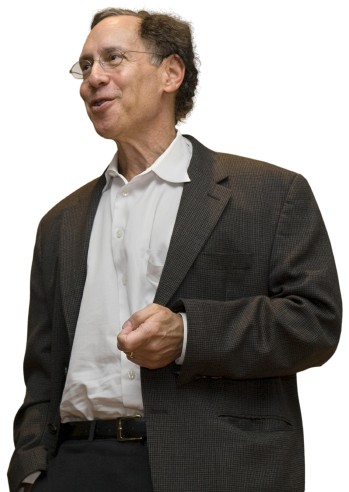CORNELL PEOPLE
Alumnus Robert Langer fights disease with biomedical engineering

Robert Langer '70 See larger image
A lot of people are alive today because Bob Langer's parents gave him a Gilbert microscope set when he was 10 years old. That gadget sparked Langer's interest in biology that eventually led to a career in biomedical engineering and the creation of drug-delivery systems to treat previously untreatable cancers, along with materials that may eventually replace damaged body parts. In 2004 Parade magazine named him as one of six "heroes whose research may save your life."
Langer graduated from Cornell in 1970 with a degree in chemical engineering and went on to earn a doctorate in chemical engineering at the Massachusetts Institute of Technology. And then got turned down for a lot of jobs.
"Mostly they just didn't write back," he said.
Fortunately, that led him to realize that what he really wanted to do was to use materials science and chemical engineering to help medicine.
Langer went to work as a postdoctoral fellow for cancer researcher Judah Folkman at the Children's Hospital Boston and at Harvard Medical School, who had what was then a radical idea: fight cancer with a drug that interferes with the chemicals tumors secrete to grow new blood vessels to nourish themselves. Langer helped find these "angiogenesis inhibitors," but they couldn't be taken by mouth and quickly broke down when injected, so he developed a way to enclose them in porous polymer microspheres from which they would be released gradually. Today, 1.5 million people use angiogenesis inhibitors every year.
Continuing to work with polymers -- materials created by joining many small molecules together in complex chains -- Langer moved on to create other new drug-delivery systems, now used to treat diseases from cancer to schizophrenia. When nanotechnology arrived, he developed implantable microchips that could release drugs on command. Polymers also offered a way to build "scaffolding" on which living cells could build new tissues, from skin grafts to replacement blood vessels. In the near future, such scaffolding might sculpt new noses, ears or livers, or even grow new nerves to repair spinal cord injuries.
Langer, now the David H. Koch Institute Professor at MIT, oversees the largest biomedical engineering lab in the world, maintaining about $10 million in annual grants and more than 100 researchers. Early on he learned that it's not enough to have a good idea; you also have to be an entrepreneur to get it out to the world. Langer holds more than 750 patents, licensed to more than 220 pharmaceutical, chemical, biotechnology and medical-device companies, some of them started by his former graduate students.
At Cornell, Langer wasn't much for extracurricular activities. He arrived just after the university compressed a five-year engineering program into four years, so there was little time for anything but study. He ruefully recalls a year with five 8 o'clocks. Today it's about the same, all work, with one exception: He does magic shows. Magic, he explains, is the art of surprise, and that's a lot like scientific discovery. And perhaps the art of the impossible.
"I run this lab, I do these companies," he says. "By doing these things you can help people live happier lives. Some people say it's magic."